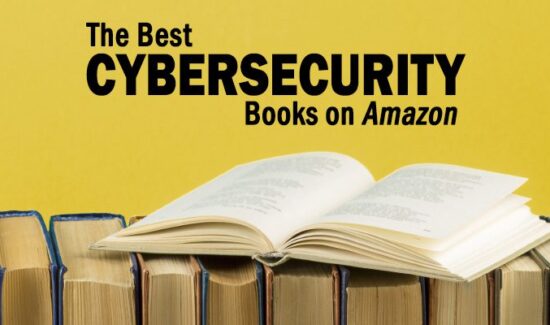Messaging: Navigating Nuances in an Ever-Changing Cybersecurity Landscape

Solutions Review’s Expert Insights Series is a collection of contributed articles written by industry experts in enterprise software categories. Larissa Gaston of Exabeam examines the nuances of updating your business’s messaging in an ever-changing cybersecurity landscape.

According to Check Point’s 2022 Cloud Security Report, 27 percent of organizations have experienced a security incident in their public cloud infrastructure within the last 12 months. Of these, nearly a quarter (23 percent) were caused by security misconfigurations in cloud infrastructure. Additionally, Verizon’s Data Breach Investigations Report reveals ransomware has continued its upward trend with an almost 13 percent rise– an increase as big as the last five years combined.
In turn, the demand for security services is continuing to increase, making the market more competitive than ever. Gone are the days when organizations can sit on their messaging for three to five years. To stay relevant in the sea of competitors, cybersecurity organizations need to be continuously analyzing their messaging and structure to understand what is and isn’t resonating with end-users. The most important thing your messaging must do is quickly, clearly, and concisely be able to explain exactly what you do and the value that you provide in the market.
How often have you gone to a technology or cybersecurity website and left still not knowing what the company actually does? You’re not alone. If you’re in the hot seat to help refine messaging for your organization, know that it will require a nuanced approach. Also, roll up your sleeves and don’t give up— it’s not for the faint of heart.
Messaging: Navigating the Nuances
Copycat Vs. Original
There are a variety of ways an organization can approach a messaging overhaul. One way is through an in-depth competitor analysis and then simply copying what you think they are doing well. While that strategy may work for some organizations in the short term, it will not help them continue to stand out in the long term. After all, you want to communicate with your differentiators. That being said, we have seen a handful of competitors over the years steal messaging verbatim from companies we’ve served. While it’s flattering, it’s also disappointing. If you’re going to steal messaging, at the very least, steal like an artist.
To forge a new and unique path, point of view, and perspective, you have to talk differently. Challenge your organization to take a risk, be brave, and do something no one else is doing. Yes, you may not be successful, but at least you know that you stayed true to your organization, your people, and its mission. If you do succeed, the end result will feel that much more rewarding. It pays to be brave.
Crafting Company Messaging — It’s A Lot like Couples Therapy
Arriving at your organization’s truth at the heart of your messaging is a delicate exercise. All departments with a stake in messaging, and even individuals within those departments have their own version of the truth. Interestingly a recent report found only 35 percent of organizations have a dedicated person or team that works on content marketing full time. This is especially true for smaller companies that have one to 99 employees, while 50 percent of small companies have no dedicated content marketing personnel.
This is all the more reason organizations are turning to third parties for help. And when your end goal is creating a holistic message that the majority agree to, it can also be helpful to hire bipartisan professionals. The process of arriving at a consensus can almost feel like couple’s therapy. I know that might sound weird, but stay with us on this.
When you are trying to fix something internally, you can get stuck. People can become so fixated on their version of the truth, what happened or worked in the past, what is not working now, and how they envision things can work better in the future that they can’t open their minds to new information and perspectives. When we began to revisit our messaging at Exabeam, we tried to work at it for five to six months before we realized that we had hit a wall. We knew that we needed to hire help.
At its core, creating messaging is an exercise in trying to figure out who you are as an organization and how you want people to view your brand, clearly position what you do and how you’re differentiated from the competition, and how you authentically and transparently talk to your customers and partners. Similar to a relationship, a messaging exercise is a commitment; just like couple’s counseling is a commitment. When a third party is involved, it can serve as a source of accountability that encourages people to show up and be engaged.
Third parties are there to build consensus and ensure a level playing field. While they may or may not be the people who come up with the actual words or message themselves, they will work a process and encourage participation from everyone involved to negotiate which ideas work best. If organizations handle a messaging exercise internally, there will be bias, period.
Messaging Matchmaking
Before even consulting with a third party, the first and most important step is internal buy-in. It is critical to have the right people on the messaging team, which needs to include stakeholders from every facet of an organization. It is also critical that the C-suite takes a firm stance behind the messaging, which will foster buy-in from all key stakeholders including engineering and technical teams, HR, and more.
Once that is in place and you are ready to hire outside help, it is important that the people you hire are aligned with your niche market and audience. Knowing your needs as an organization and what your end goal is with the messaging exercise can help you find the right fit. Find a third party that speaks the same language and can easily grasp what sets your product, services, and organization apart. If your end goal is sales, then find a third party that understands the sales process specifically in your industry.
Rolling Out the Red Carpet
Timing is critical for a messaging roll-out. There are pros and cons to this, but try to avoid doing it during a major product launch since the risk of creating market confusion could increase. In our most recent messaging overhaul we renamed our products and fit them under the new message. If we did not do this, then we could have been stuck with products and platforms with the older name and potentially created more confusion. In the end, it was great we had previously messaged ourselves with XDR, because we got into the right conversations and started the XDR Alliance, but I do still feel we created some market confusion as a result. We emerged with New-Scale SIEM, clarifying our market and differentiators.
Live. Learn. Hire Help When It Makes Strategic Sense
Throughout the process, try to step back, breathe, and have a holistic view. It is a very interesting experience to watch how people interact, make decisions, and share perspectives. You can learn a lot about your people, yourself, and the shared passion you all have for your work.
Back to the counseling analogy, it’s like “Are we staying together or getting divorced?” The people who commit to working through the tough stuff together in a healthy way, especially when the tough stuff may be very difficult to work through, make all the difference in whether you will sink or swim.




















